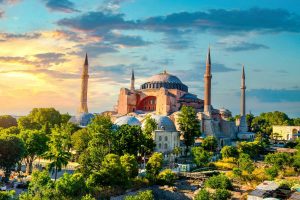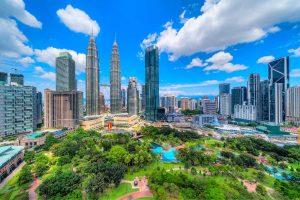It is difficult to say which is a better place to live in Turkey, Malaysia, and Pakistan, as it largely depends on individual preferences and needs. Each country has its own unique culture, climate, economy, landscapes, opportunities, and political situation. It would be best to research and compare the different factors that are important to you, such as cost of living, job opportunities, safety, and access to healthcare and education, before making a decision. Additionally, it is always a good idea to visit a place in person before making a decision about relocating. Each country has its own strengths and weaknesses, so the best place to live will depend on an individual’s priorities and preferences. But many of us are still trying to find the best country to live in. Therefore, we are here to give you a comprehensive guide with all the factors of every country one by one.
Work-Life Balance In Turkey
Work-life balance in Turkey can vary depending on the industry and the specific company. In general, the traditional 9-to-5 workday is common, but some industries, such as finance and technology, may require longer hours. The government has a legal working week of 40 hours and additional working hours must be compensated with overtime pay. However, it is also common for people to work additional hours without receiving overtime pay.

The culture in Turkey places a strong emphasis on family, and many people prioritize spending time with their loved ones. However, the increasing pace of life, urbanization, and economic pressures have been affecting the work-life balance in Turkey. Many people have to work longer hours or have multiple jobs to make ends meet. Overall, Turkey has a good balance of work and family time, but it can be challenging for some people to achieve a good balance due to economic pressures and cultural expectations. It is important to research and understand the work culture of a specific industry or company before accepting a job in Turkey.
Population
Turkey has a population of approximately 84 million people, which is steadily growing due to high birth rates and immigration. The country’s culture and religion value large families and have a high total fertility rate of 2.1 children per woman. The government faces challenges in providing housing, infrastructure, and services for the growing population, particularly in urban areas. Unemployment among the youth population is also a concern, which could lead to social and economic instability.
GDP
Turkey’s GDP reached $846 billion in 2020, despite the impact of the COVID-19 pandemic. The country’s economy is diversified, with significant contributions from services, industry, and agriculture. Turkey is considered a newly industrialized country and an emerging market, but it has faced challenges such as high inflation and currency fluctuations.
Growth-Rate
Turkey’s economic growth rate has been fluctuating in recent years, with an average growth rate of around 3% in the past decade. However, in 2020, due to the impact of the COVID-19 pandemic, the growth rate dropped to -2.5%. The government has been implementing various economic policies and reforms to promote sustainable growth and address the challenges such as inflation and currency fluctuations.
Educational System
In terms of government investment, Turkey has made significant strides in recent years, with a focus on increasing the number of schools and universities, as well as improving the quality of education. The government has also implemented a number of reforms aimed at improving the standard of education and making it more accessible to all students, regardless of their socioeconomic background.
Work-Life Balance In Malaysia
Malaysia has been recognized for its efforts to improve work-life balance for its employees. The country has implemented policies such as flexible working hours, parental leave, and childcare support to help employees balance their work and personal responsibilities.

The government has also introduced initiatives like the “Work-Life Harmony Campaign” to raise awareness about the importance of work-life balance and to encourage employers to adopt more flexible working arrangements. Additionally, many companies in Malaysia are increasingly offering benefits such as telecommuting and sabbaticals to promote work-life balance for their employees. Overall, the country is making progress in promoting a healthy work-life balance for its citizens.
Population
As of 2021, the population of Malaysia is around 32 million people, with the majority of the population consisting of ethnic Malays (around 60%). Other ethnic groups include Chinese (around 25%) and Indians (around 7%). The population is mostly concentrated in urban areas, specifically in the capital city of Kuala Lumpur and the surrounding states.
GDP
Malaysia’s GDP is around $375 billion in 2021. It has a diversified economy with strong exports, mostly in electronic goods, natural resources, and palm oil. The country is expected to continue growing in the future.
Growth-Rate
Malaysia’s economic growth rate was around 3% in 2021. However, due to the COVID-19 pandemic, the country’s GDP growth rate was negatively affected, causing it to shrink by 7.8% in 2020. The country’s economy is expected to recover in the coming years but it could be affected by global economic conditions.
Educational System
Malaysia, too, has made significant investments in its education system, with a focus on increasing access to education and improving the quality of teaching. The country has a strong emphasis on technical and vocational education and has implemented a number of programs aimed at improving the skills of its workforce and making them more competitive in the global marketplace.
Work-Life Balance In Pakistan
Work-life balance in Pakistan has been improving in recent years, with a growing number of employers recognizing the importance of supporting their employees in achieving a balance between their work and personal lives. Many companies are now offering flexible working arrangements, such as telecommuting and part-time work, which allow employees to better manage the demands of their professional and personal lives.

Additionally, there is an increasing number of government initiatives and private sector programs aimed at promoting work-life balance in Pakistan, such as workplace wellness programs and parental leave policies. These efforts are helping to create a more supportive and inclusive work environment for all employees.
Population
As of 2021, the population of Pakistan is around 220.89 million people, making it the fifth-most populous country in the world. The population is diverse with various ethnic and linguistic groups. The majority of the population is concentrated in urban areas, with Karachi and Lahore being the largest cities. The population growth rate is around 1.5%. The population is relatively young, with around 35% of the population being under the age of 15.
GDP
As of 2021, the Gross Domestic Product (GDP) of Pakistan is around $273 billion USD. The main contributors to the GDP are the agriculture, manufacturing, and services sectors. Agriculture accounts for around 21% of GDP, manufacturing around 24%, and services around 55%.
Growth-Rate
As of 2021, the GDP growth rate in Pakistan is around 2-3% despite challenges posed by the COVID-19 pandemic, inflation, and a high current account deficit. The government is implementing policies to improve the economy and address these challenges. Long-term development plans such as CPEC are expected to boost the economy.
Educational System
Pakistan’s educational system is well-regarded, with a strong emphasis on both primary and higher education. The government invests heavily in education and has implemented various programs to improve the quality of education, particularly in rural areas. Additionally, Pakistan has a large number of universities and colleges that offer a diverse range of disciplines and programs, producing well-educated graduates who contribute significantly to the country’s economy. Despite some challenges such as limited resources and unequal access to education, the overall quality of education in Pakistan is continuously improving and has a positive impact on the country’s development.
Final Thoughts
In conclusion, Turkey, Malaysia, and Pakistan all have their own unique characteristics and offer different experiences. The best place to live will depend on an individual’s priorities and preferences. Turkey offers a diverse array of experiences and a relatively low cost of living, but the political situation may be a concern. Malaysia offers a good quality of life at a low cost, but the infrastructure and public transportation may not be as developed. Pakistan has a rich culture and history and a low cost of living, but the political and security situation may be a concern. Ultimately, it is essential to conduct thorough research and consider all factors before making a decision about where to live. If you’re still unsure or unable to make a choice about where to reside, you may consider the guidance of the best travel agency to clarify all your queries.






